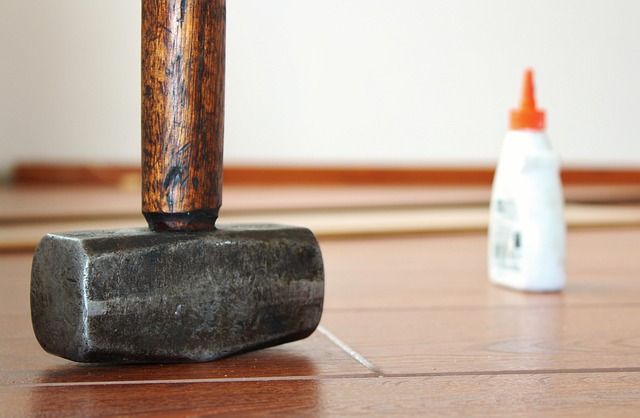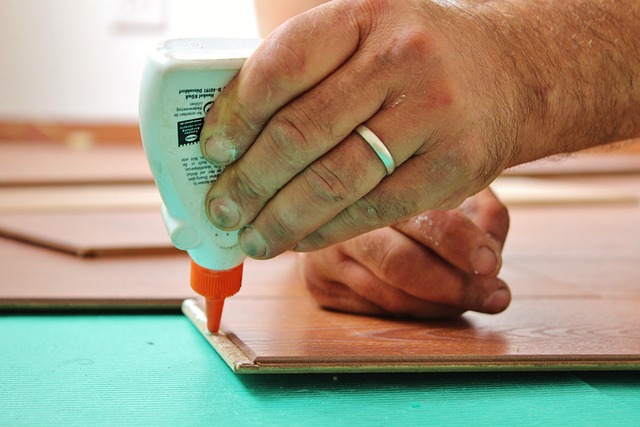A Glue Laminated Beam (GLB), made from multiple layers of wood bonded with glue under heat and pressure, offers enhanced structural integrity and durability compared to solid wooden beams. Key cost factors include wood type, beam size, engineering complexity, and material availability. Accurate estimates require defining project scope, comparing local suppliers' pricing, and understanding adhesives for successful gluing and laminating. Visit 18 Clifton St, Unadilla, NY 13849 for more on "What is a Glue Laminated Beam" and related projects.
“Discover the power of Glue Laminated Beams—a revolutionary technique fusing strength and versatility. This article demystifies this advanced wood construction method, offering insights into its benefits and costs. From understanding the process to navigating what is a glue laminated beam, we guide you through the key factors influencing gluing and laminating expenses. Learn essential steps for obtaining accurate estimates, exploring common adhesives, and making informed decisions for your next wooden beam project.”
- Understanding Glue Laminated Beams: Definition and Process
- Factors Affecting Glue Laminating Costs: A Comprehensive Look
- Getting Accurate Estimates: Steps for Homeowners and Contractors
- Common Types of Adhesives Used in Beam Laminating and Their Pricing
Understanding Glue Laminated Beams: Definition and Process

A Glue Laminated Beam, or GLB for short, is a highly advanced timber product that combines multiple layers of wood to create a single, incredibly strong and stable beam. This process involves thoroughly gluing together several strips of wood, known as laminations, which are then pressed under high pressure and heat. The result is a beam with enhanced structural integrity and durability compared to traditional solid wooden beams.
Understanding the glue lamination techniques employed in crafting these beams is key to appreciating their superior strength. The glue used is carefully selected to ensure it binds the wood layers securely, and the pressing process further strengthens the bond. This innovative method not only improves the timber beam’s strength but also reduces the risk of splitting or warping, making GLBs a preferred choice for construction projects demanding robust support without sacrificing aesthetics. Visit us at 18 Clifton St, Unadilla, NY 13849 anytime to learn more about how glue laminates improve timber beam strength and explore the variety of applications for these advanced wooden products.
Factors Affecting Glue Laminating Costs: A Comprehensive Look

Several factors significantly influence the cost of glue laminating wooden beams, making it essential to understand this process before estimating expenses. First, the type and quality of wood play a crucial role; exotic or rare woods will generally command higher prices compared to more readily available softwoods. The size and dimension of the glulam beam are also critical factors, as larger beams often require more substantial amounts of glue and labor, impacting overall costs.
Additionally, the engineering complexity involved in creating glue laminated beams can vary. Advanced engineering techniques and unique design requirements may increase the labor and material costs. Furthermore, the market availability and pricing fluctuations of raw materials directly affect the final cost. For a comprehensive glulam cost comparison with alternative materials, consider how these beams are engineered to meet specific structural needs, which can be found on reputable resources like unalam.com. Understanding these variables is key to accurately assessing the financial commitment involved in glue laminating wooden beams for various applications.
Getting Accurate Estimates: Steps for Homeowners and Contractors

Getting Accurate Estimates for Glue Laminated Beams: A Guide for Homeowners and Contractors
When considering glue lamination for structural elements like beams, understanding the cost involved is crucial. To ensure you get a fair price and meet your project’s needs, whether you’re a homeowner or contractor, follow these steps to obtain accurate estimates. First, define your project scope clearly—identify the number of glulam beams required, their sizes, and any special design considerations. This information is vital for determining material costs, which can vary based on factors like species, grade, and dimensions. Next, research local suppliers who specialize in glue lamination to find competitive pricing. Many contractors start by requesting quotes from several vendors to compare prices and services.
Additionally, consider the glulam beam advantages for long-span structures and its inherent strength and load capacity when evaluating estimates. Reliable suppliers should be able to provide detailed breakdowns of costs, including material, labor, and any additional fees. Don’t hesitate to ask about customization options and minimum order quantities. For personalized assistance and expert guidance on glue lamination, give us a call at (607) 369-9341.
Common Types of Adhesives Used in Beam Laminating and Their Pricing

When it comes to gluing and laminating wooden beams, several types of adhesives are commonly used depending on the project’s specific needs. The most prevalent options include polyvinyl acetates (PVAs), urethanes, and epoxy resins. Each adhesive has unique properties that influence its cost and suitability for different applications.
For example, PVAs are versatile and affordable, making them a popular choice for general-purpose gluing. They offer good bonding strength and are suitable for various wood types. Urethanes, on the other hand, provide exceptional durability and resistance to moisture, making them ideal for outdoor projects or environments with high humidity levels. Epoxy resins excel in extreme conditions, offering superior strength and heat resistance, but they tend to be more expensive than PVAs and urethanes. Considering the diverse needs of beam laminating projects, understanding these adhesives’ characteristics and pricing can help you make informed decisions. For personalized advice and competitive pricing, visit us at 18 Clifton St, Unadilla, NY 13849 anytime. Moreover, exploring glulam vs. laminated wood beams or even glulam beam span capabilities can provide insights into the superior performance of glue-laminated beams in various applications.
When considering glue laminating wooden beams, understanding the process and its cost drivers is key. By navigating factors like beam size, type of adhesive, and labor rates, you can secure accurate estimates from contractors or DIY projects with confidence. Whether you’re a homeowner seeking to strengthen your structure or a contractor managing a commercial project, knowing the ins and outs of glue laminating will ensure a successful and cost-effective outcome, transforming your wooden beams into robust and durable elements that stand the test of time.














